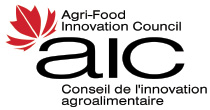
Theme 3: Intellectual Property Protection, Cooperation and Collaboration
Click on the workshop links below to expand the section and read presentation summaries as well as gain access to presentation and workshop files.
Workshop 3-A: IP Management in Interdisciplinary and Cross-Sectoral Partnerships
 Lana Culley, Director of Business Development at the Vineland Research and Innovation Centre noted that the movement of technology from the lab to market is a collaborative endeavour between partners.
Lana Culley, Director of Business Development at the Vineland Research and Innovation Centre noted that the movement of technology from the lab to market is a collaborative endeavour between partners.
A commercial path and impact-related goals must be identified from the outset and partnership agreements established that place the commercialization strategy at the front-end of research projects. The determined path to the market should then guide the selection of partners and the research process.
Universities have strong in-house development but often need assistance in the path to commercialization. Private sector companies often have great ideas, but need support in R&D. Research organizations like Vineland bring industry connections and in-depth market knowledge to create the necessary conditions to enable innovation. Broader dissemination can be effectively achieved when academia, industry and research organizations work together.
Flexible IP policies ensure an efficient path to commercialization. Whether it is the industry partners bringing solutions for further development or the researchers developing new technology, IP and licensing models should consider each party’s contributions and related risks in order to maximize value and impact.
 Dr. Chidi Oguamanam, Professor in the Faculty of Law at the University of Ottawa offered up his views, from a national and international perspective, on the challenges and opportunities for IP in collaborative research. He also touched on aspects of the potential synergies between private and public agricultural R&D.
Dr. Chidi Oguamanam, Professor in the Faculty of Law at the University of Ottawa offered up his views, from a national and international perspective, on the challenges and opportunities for IP in collaborative research. He also touched on aspects of the potential synergies between private and public agricultural R&D.
Interdisciplinary and cross-sectoral partnerships help create efficient mobilization of resources to catalyze research. Agricultural R&D thrives as a result of a series of factor endowments – expertise, patented inputs, and infrastructure – that neither the private nor public sector can provide independently.
Gaining insight from more advanced models of research collaboration in other sectors (Ex. Pharmaceutical R&D), embracing small farmers as research partners, flexible publication agreements, and financial incentives may help the agricultural sector move forward on interdisciplinary and cross-sectoral partnerships and facilitate a smoother process for collaboration.
Dr. Oguamanam invited participants to rethink the opportunities for research dissemination arising from IP exploitation. He emphasized that the agriculture sector must abandon today’s ideology of collaboration as a means of guaranteeing public funds, and move towards a new collaboration paradigm based on shared goals and the facilitation of dissemination.
IP provides important incentives for knowledge production as well as provides farmers with access to the benefits of high-quality research through the commercialization of new technologies and processes. Patented products also advance basic research by bringing in revenue that can help support basic research projects that deserve funding.
Presentation: Intellectual Property in Agriculture – Challenges and Prospects of Collaborative Research & Development – English
Présentation : Propriété intellectuelle dans le secteur de l’agriculture – défis et perspectives de recherche et de développement coopératifs – Français
Workshop Resources:
Workshop Discussion Questions – English
Questions de discussion de l’atelier – Français
Workshop Handout – IP Management in Partnerships – English
Document Ressource – Gestion de la PI au sein de partenariats – Français
Workshop 3-B: IP 101
 From the Canadian Intellectual Property Office, Christine Teixeira and Seema Bissoon-Haqqani provided a primer on the different forms of intellectual property, intellectual property rights and patents.
From the Canadian Intellectual Property Office, Christine Teixeira and Seema Bissoon-Haqqani provided a primer on the different forms of intellectual property, intellectual property rights and patents.
Patents provide an important mechanism for agricultural research dissemination. With the requirement of full public disclosure of the invention comes a publication added to the public domain and a means of sharing cutting-edge information with the other researchers.
Patents can encourage research partnerships between academia and industry, helping to lessen the distance (and time) from product development to market introduction while also helping researchers and other key stakeholders protect their investments, provide a sense of security for potential investors, and help negotiate further funding through the demonstrated transformation of research achievements into marketable products.
 Researchers are encouraged to search for similar technology patents to help ensure that the full potential of their inventions is realized. Patent agents can help achieve this by providing support in the early stages of the patent process. Teixeira and Bissoon-Haqqani stressed that researchers should make use of all available information on various free and fee-based patent databases (see Resources section).
Researchers are encouraged to search for similar technology patents to help ensure that the full potential of their inventions is realized. Patent agents can help achieve this by providing support in the early stages of the patent process. Teixeira and Bissoon-Haqqani stressed that researchers should make use of all available information on various free and fee-based patent databases (see Resources section).
As a resource for researchers, entrepreneurs, commercial enterprises, and potential funders, patent databases help determine the patentability of an invention. They also have an important role to play in reducing the duplication of research, estimating patent values, gaining intelligence on the innovative activities of business competitors, and identifying key trends and players in specific subject matters.
Presentation: IP 101: IP Rights and Use Patents – English
Présentation : PI 101 : Droits de PI et usage des brevets – Français
 Jonathan Roch, a patent and trademark agent, and partner at MBM Intellectual Property Law, focused on plant breeders’ rights (PBR) and the International Convention for the Protection of New Varieties of Plants (UPOV Convention), providing participants with a detailed understanding of the application process and the uses of PBR.
Jonathan Roch, a patent and trademark agent, and partner at MBM Intellectual Property Law, focused on plant breeders’ rights (PBR) and the International Convention for the Protection of New Varieties of Plants (UPOV Convention), providing participants with a detailed understanding of the application process and the uses of PBR.
PBRs are a form of intellectual property rights – with particular conditions of protection, scope and exceptions – by which plant breeders can protect their new varieties allowing owners to prohibit specific unauthorized uses of the variety. Varieties must be novel, distinct, uniform and stable in order to be protected under the Plant Breeders Rights Act.
Besides providing plant breeders with stronger protection and a greater return on investment, PBR bring better access to varieties from other countries by encouraging foreigners to protect and sell in Canada.
Presentation: Plant Breeders’ Rights – English
Présentation : Les droits d’obtenteurs – Français
 Christine Piché, Director of Business Support at the National Research Council (NRC), stated that assessing potential business opportunities for research projects at an early stage helps guide plans to better communicate and exploit new knowledge and technologies.
Christine Piché, Director of Business Support at the National Research Council (NRC), stated that assessing potential business opportunities for research projects at an early stage helps guide plans to better communicate and exploit new knowledge and technologies.
Choosing the most suitable knowledge mobilization strategy for a particular innovation – either commercial exploitation or other forms of dissemination – can significantly maximize the value of IP assets.
Exploitation strategies need to build on business needs and be defined on the basis of a detailed evaluation on a technology-by-technology basis that first considers the objectives of the project, the features and conditions for implementation of each research output, the technology readiness level, and the relevant commercialization strategies.
Intellectual property protection (IPP) does not preclude creators from publishing their findings. However, the researcher should consider patenting if his findings are likely to have potential market impact.
Presentation – Intellectual Property 101 – English
Présentation : Propriété intellectuelle 101 – Français
Workshop Resources:
Workshop Discussion Questions – English
Questions de discussion de l’atelier – Français
Workshop Handout – IP Licenses – English
Document Ressource – Licences PI – Français
